Physical Address
304 North Cardinal St.
Dorchester Center, MA 02124
Physical Address
304 North Cardinal St.
Dorchester Center, MA 02124
Lobster caviar, also known as lobster roe, refers to the coral-colored eggs found inside a female lobster’s ovaries. When harvested and processed, these small eggs resemble fish roe caviar, bearing a similar texture and appearance.
Lobster caviar has a sweet, briny flavor with umami notes. Its taste is often described as reminiscent of sea urchin roe due to its rich, creamy mouthfeel and subtle shellfish essence.
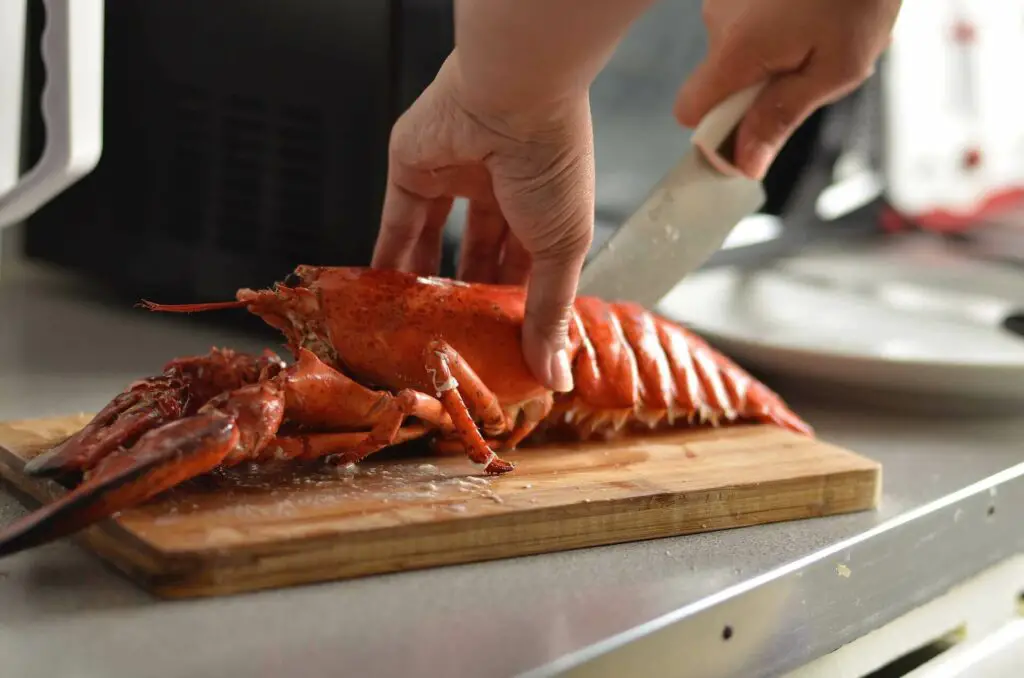
While the terms “lobster caviar” and “lobster roe” are sometimes used interchangeably, only around 5% of female lobsters actually produce the coral-colored eggs that resemble true caviar.^[Source: The Spruce Eats]
The eggs must meet certain criteria to qualify as caviar, including being:
As such, the eggs found inside most female lobsters don’t classify as true caviar. However, when harvested sustainably from egg-bearing lobsters, the orange lobster roe possesses a similar decadent taste and texture as caviar, which earns its comparison.
To produce lobster caviar, trained divers carefully harvest coral-colored eggs from the ovaries of mature, egg-bearing female lobsters. This process does not harm the lobster, allowing her to continue reproducing.
The fresh roe is then gently processed, separating the delicate eggs from connective tissues while retaining their shape. Next, the eggs are rinsed in saltwater brine to draw out impurities.
Finally, the lobster roe undergoes meticulous quality checks to ensure correct hue, size, firmness and taste before sale.
Thanks to advances in sustainable harvesting, lobster caviar production helps conserve wild populations instead of relying on farmed stock like many types of roe.
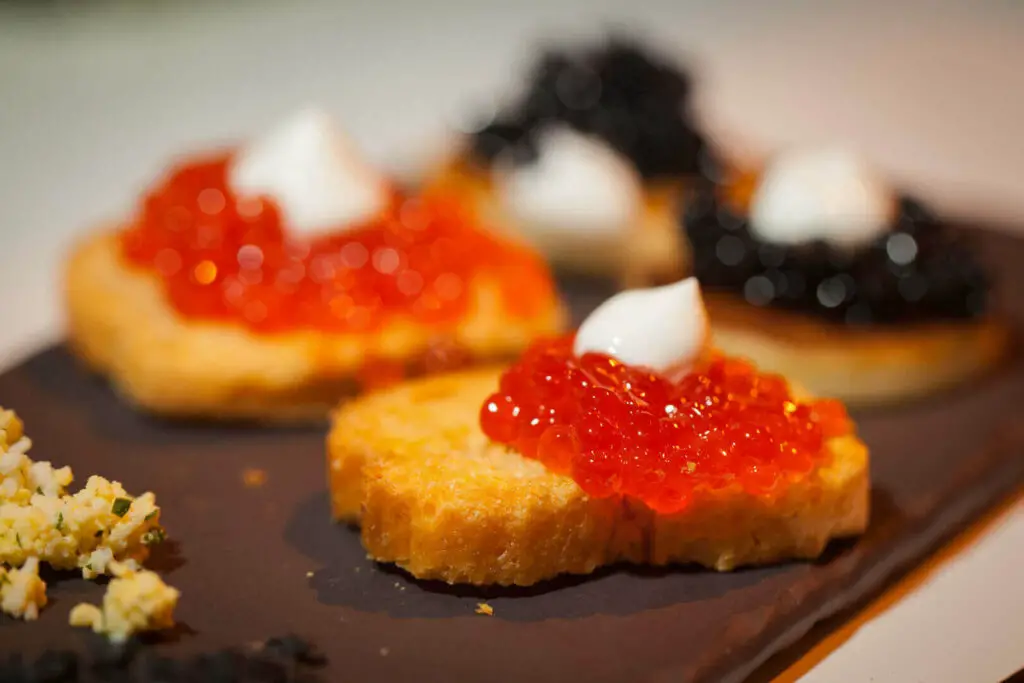
Lobster caviar has a sweet, delicate flavor with briny ocean essence and rich umami notes. Its creamy mouthfeel bears resemblance to sea urchin roe, while the subtle shellfish flavor provides an essence of lobster.
When eaten, the coral-colored pearls provide a firm “pop” followed by an elegant, creamy finish. Top chefs praise lobster caviar for its ability to elevate dishes without overpowering other ingredients.
Lobster caviar delivers exceptional nutritional value. The roe is packed with protein, essential vitamins and heart-healthy omega-3 fatty acids.
Per 100 grams, lobster caviar contains:^[Source: Livestrong]
Additionally, lobster caviar is rich in astaxanthin, a reddish carotenoid pigment. Astaxanthin demonstrates potent antioxidant effects capable of reducing inflammation and protecting cells from damage.^[Source: WebMD]
Thanks to this unique nutrition profile, lobster caviar delivers health perks beyond its decadent taste.
Chefs around the world praise lobster caviar for its ability to elevate dishes. Its versatility allows enjoyment atop canapés, mixed into pasta or served alongside caviar pairings like blinis.
Here are 5 delicious ways to serve lobster caviar:
A small spoonful of lobster caviar on top of bite-sized crackers or toasts makes an elegant passed hors d’oeuvre. Its prominence showcases the roe’s refined flavor and pearl-like appearance.
Pair lobster caviar with crisp points, melba toasts or cucumber cups for contrasting textures. Top with a small dollop of crème fraiche or crowning herb like dill.
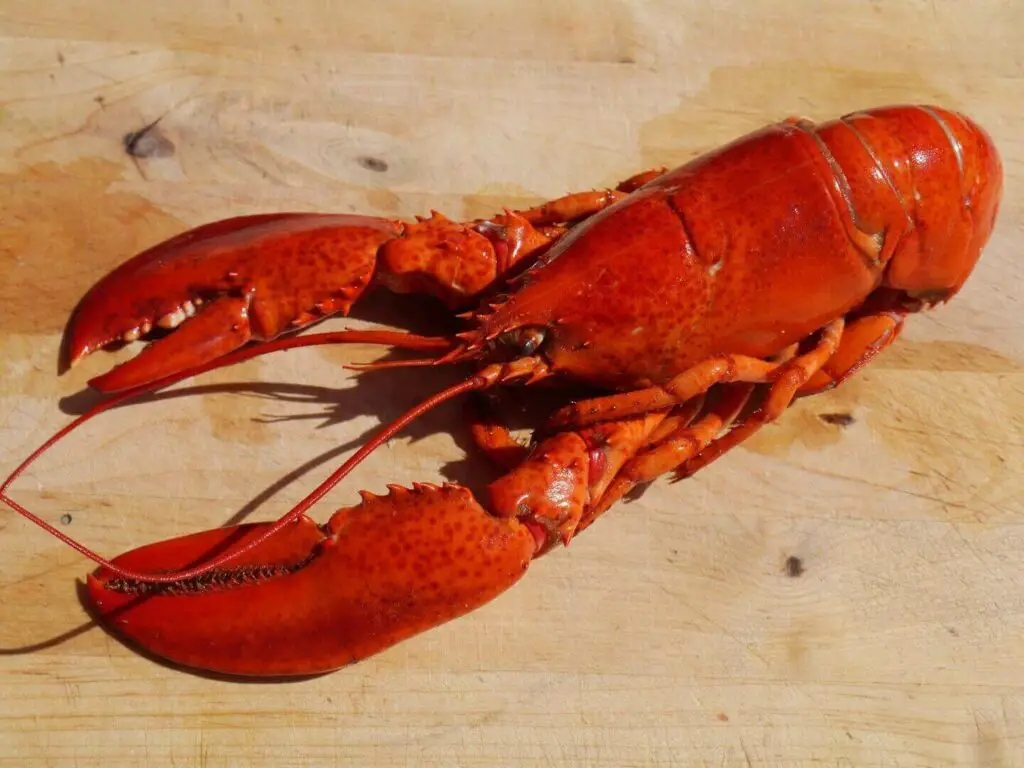
The indulgent taste of lobster caviar elevates simple pasta dishes into luxurious entrees. Toss the roe with hot pasta so it melts into a rich, creamy sauce clinging to each noodle.
Buttery sauces like alfredo or veloute provide an ideal canvas for lobster caviar’s sweet brininess. Mix into squid ink pasta for dramatic black and orange hues.
Enjoy lobster caviar traditionally with a selection of blinis, small buckwheat pancakes, and a dollop of crème fraiche or sour cream.
Assemble layered bites of cavity on crème fraîche atop blinis. Top with a squeeze of lemon or lime juice to accentuate the roe’s sweet-briny balance.
Lobster caviar makes an indulgent garnish for composed seafood dishes. Its partnering brings out subtle shellfish nuances in scallops, halibut or Arctic char.
Try crowning seafood crudo, tartare or carpaccio dishes with pearls of lobster caviar. Sprinkle atop poached lobster or shrimp cocktail for an upscale touch.
Mixing lobster caviar into sushi rice crafts lavish hosomaki rolls. Its orange pearls add vibrant pops of color and flavor contrast inside nori-wrapped bites.
Stir lobster roe into sushi rice seasoned with rice vinegar and sugar. Fill rolls with caviar-flecked rice, avocado and cucumber for an elegant caterpillar roll.
Lobster caviar can be purchased fresh or frozen from select gourmet fish markets and specialty food stores. Given its luxury status as a delicacy, finding lobster roe generally requires visiting upscale shops.
When buying fresh, look for coral-orange pearls with a firm texture avoiding any mushiness. Frozen caviar should appear loose, not solidly packed into ice crystals.
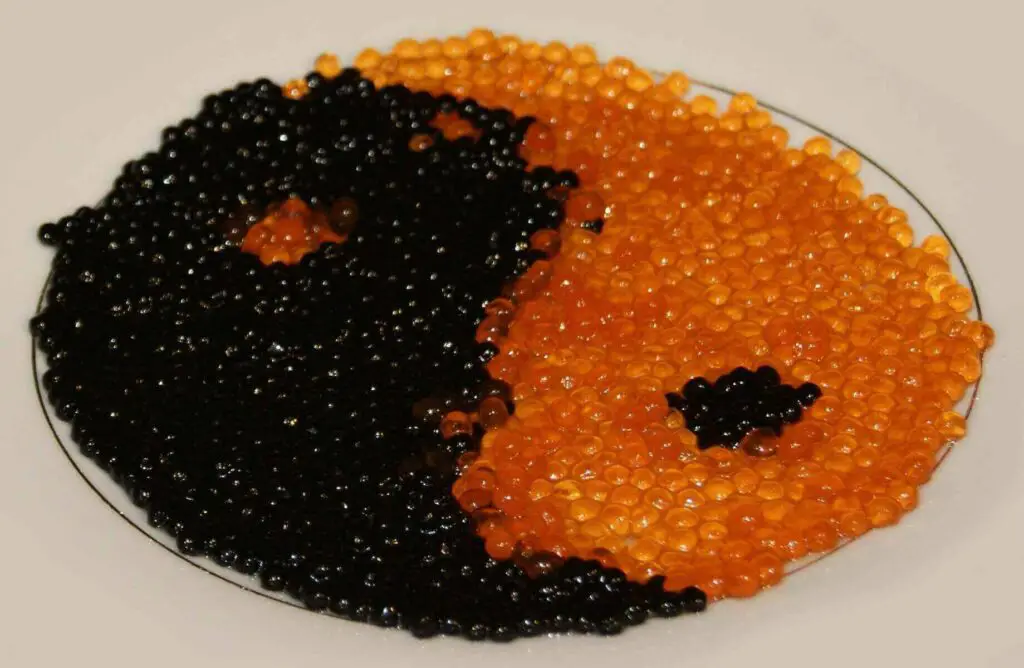
In the United States, lobster caviar faces no regulations or illegal status federally. However, some states have placed restrictions regarding its harvest and sale from local waters.
For instance, Maine and Massachusetts prohibit the sale of products from their lobster populations, including lobster roe. Yet imports from Canada or Europe to these states remain legal and widely available.
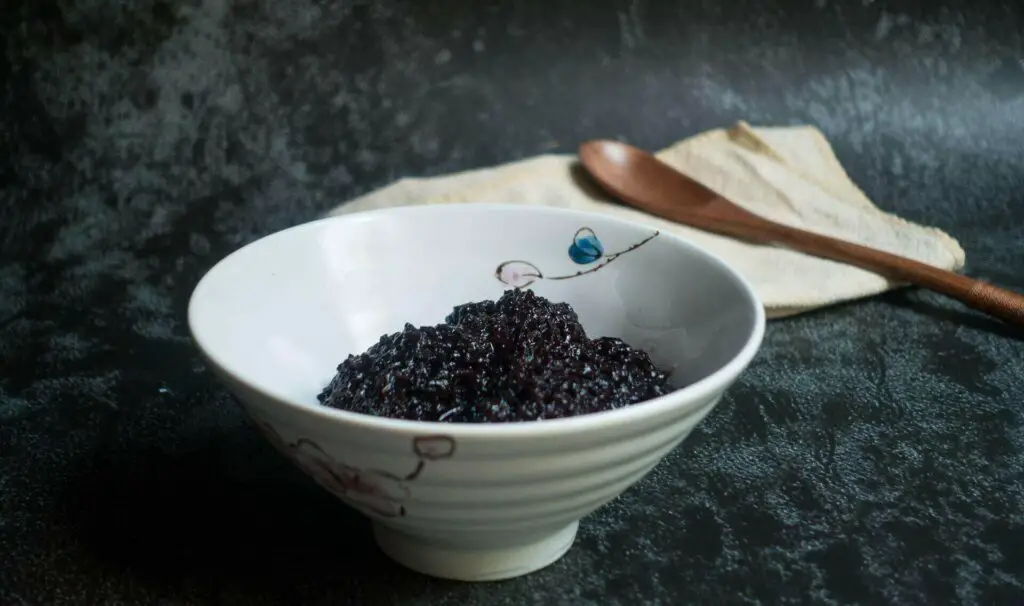
Proper storage preserves lobster caviar’s delicate texture and subtle flavors. Once thawed or opened, use within 3-4 days.
Here are tips for storing:
Yes, lobster caviar is quite expensive, with market prices reaching over $100 per ounce for top-quality roe. This exceptional pricing places lobster caviar among other luxury ingredients like Beluga caviar or white truffles by weight.
Such commanding prices result from:
As the premier lobster product, roe from egg-bearing females sells for higher premiums than lobster meat itself. Due to scarce availability, lobster caviar is treated as a delicacy.
Lobster caviar earns elite luxury status thanks to:
Exclusivity – Restricted supply with harvesting limitations makes roe highly exclusive. Costa Rica, Nicaragua, and Honduras comprise 85% of fisheries.^[Source: Intrafish]
Artisanal production – Strict controls and specialized methods required to sustainably collect and process lobster eggs without harming populations.
Exquisite taste – Its indulgent flavor profile and velvety texture drive demand among top Michelin chefs.
Revered ingredients – Caviar and lobster both signify indulgent, fine dining on their own. Their combination in lobster roe takes luxury to new heights.
Much like Beluga Sturgeon caviar or white winter truffles, lobster caviar occupies rarefied air as an ingredient synonymous with extravagance and premium cuisine.
Dry sparkling wines present ideal pairings for lobster caviar, including:
Dry white wines also complement lobster roe’s rich taste:
In both cases, dryness and acidity cuts through the caviar’s lush creaminess while effervescence scrubs the palate. White wines avoid overshadowing the delicate lobster essence.